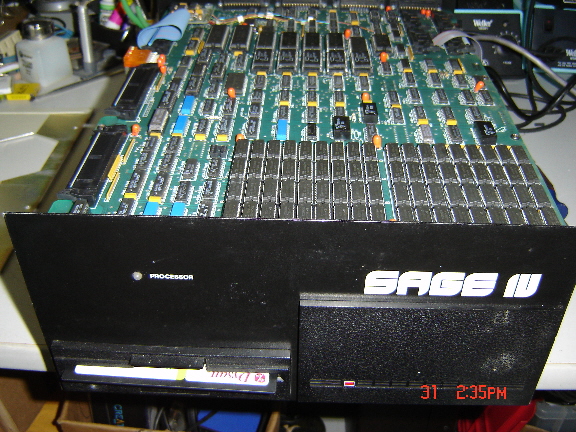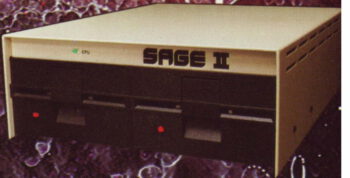 The Sage II computer was introduced by Sage Technology of Reno, Nevada in 1982. The quick synopsis of the machine is that it contains a 68000 running at 8 MHz and has 512 KB of DRAM. As is obvious from the picture, it has two integral 5.25″ floppies. It had no hard disk (that was left to the Sage IV). External connections included a serial port for communication with a terminal, a serial port for communication to a modem, a parallel port for connection to a printer, and an IEEE 488 port.
The Sage II computer was introduced by Sage Technology of Reno, Nevada in 1982. The quick synopsis of the machine is that it contains a 68000 running at 8 MHz and has 512 KB of DRAM. As is obvious from the picture, it has two integral 5.25″ floppies. It had no hard disk (that was left to the Sage IV). External connections included a serial port for communication with a terminal, a serial port for communication to a modem, a parallel port for connection to a printer, and an IEEE 488 port.
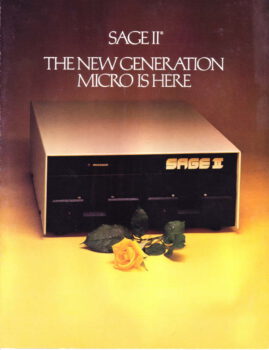 There were two versions of the Sage II. The earlier version had full height 5.25″ floppies; the later version had half height 5.25″ floppies and a corresponding reduction in the height of the box. Another way to distinguish the machines is that the first edition had under bars and over bars on the “II” of “Sage II”, while the second didn’t have them (see the picture above).
There were two versions of the Sage II. The earlier version had full height 5.25″ floppies; the later version had half height 5.25″ floppies and a corresponding reduction in the height of the box. Another way to distinguish the machines is that the first edition had under bars and over bars on the “II” of “Sage II”, while the second didn’t have them (see the picture above).
The UCSD p-System
More interesting than the hardware is that the primary operating system used by the Sage II was the UCSD p-System, specifically a multi-user version of p-System IV. The UCSD p-System was an operating system written in Pascal with a lot of standard software for writing/compiling/debugging Pascal programs (compilers for other languages also existed). Eventually UCSD transferred ownership and rights to SofTech, who continued developing it, including the version used by the Sage.
The p-System wasn’t a native compiler. The source program was compiled to an abstract stack machine using a pseudo machine language, called p-code. The “p” of “p-System” stands for pseudo. Like Java, the p-code programs were then interpreted by a native machine language program. Although this extra level of interpretation sapped performance, it also meant that the p-System could be (and was) brought up easily on a machine since most of the OS and utility software didn’t even need to be compiled — p-code was transportable across very different machines.
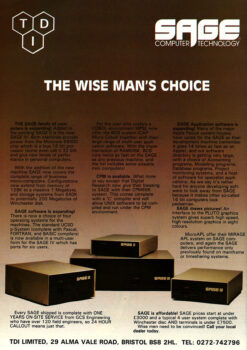 There were four versions of the p-code architecture, and the Sage used the final one, p-System IV. The original p-code architecture could address only 64 KB of RAM.
There were four versions of the p-code architecture, and the Sage used the final one, p-System IV. The original p-code architecture could address only 64 KB of RAM.
The IV edition was modified to allow up to 64 KB of p-code and 64 KB of data. As the Sage had 512 KB of DRAM, only 128 KB was used by the p-System, leaving 384 KB for running the p-code interpreted and, mostly, a RAM disk.
Reports exist that say the p-code files could be compiled to native code to achieve faster run times for many types of program
The SAGE IV was released in 1983.
TDI was a UK based distributor, that sold Sage computers branded TDI (see the documents section below for examples)
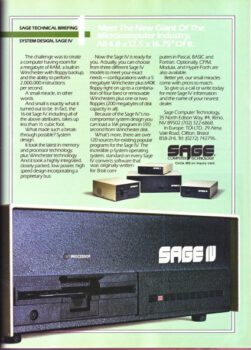 Hardware:
Hardware:
Board0: CPU: MC68000 @ 8 MHz, 2× serial RS-232 ports 19.2 kbit/s, Parallel input/output (PIO) for printers, GPIB, Floppy disc controller, 512 KByte DRAM. Same as in SAGE II.
Board1: 4× serial RS-232 ports 19.2 kbit/s, Hard disk controller, 512 KByte DRAM.
Memory consisting of 64 Kbit 150 ns memory modules. Parity error protected setup.
Minimum system memory is 256 KByte.
Storage: 1× 5¼” 800 KByte F.D. drive. 1× 5 – 40 MByte Winchester harddisk.
Built-in multi-user BIOS.
Introduced in November 1982
The included operating system was the UCSD p-System. Many other operating systems were available[8] including CP/M-68K, Idris, PDOS, HyperFORTH Plus, BOS, TRIPOS, Mirage, and MOSYS. Programming languages available included Pascal, Modula-2, C, FORTRAN77, BASIC, 68000 macro assembler, APL, LISP and Forth.
Relevant documents
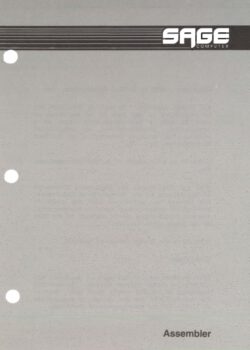 |
Assembler Manual 1983 |
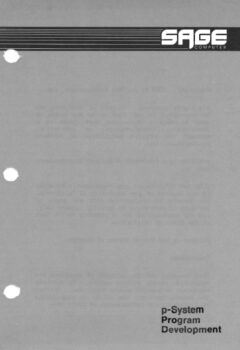 |
p-System Program Development 1983 |
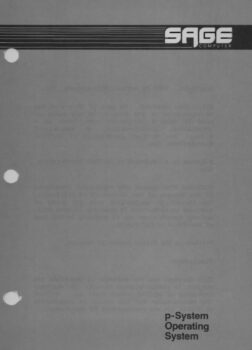 |
p-System Operating System Manual 1983 |
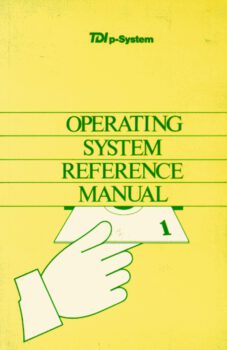 |
TDI UCSD Operating System Contents only, identical to Sage/Softech manuals |
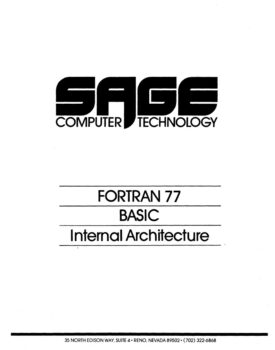 |
pSystem_Fortran_BASIC_System_Internals.pdf |
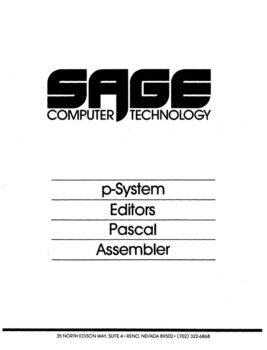 |
pSystem Users Manual Editors Pascal Assembler |
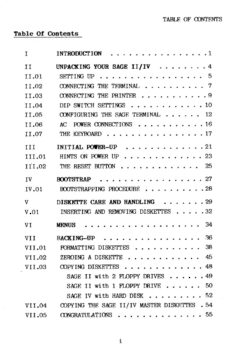 |
Getting started with Sage II/IV |
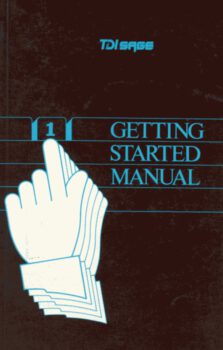 |
TDI Getting started identical to getting started with Sage II/IV listed above |
 |
TDI Internal Architecture guide Identical to Softech Internal Architecture Guide |
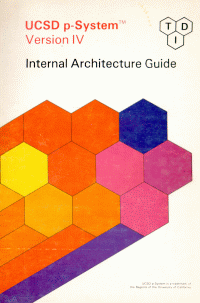 |
TDI Internal Architecture guide Identical to Softech Internal Architecture Guide |
| TDI Users’ Manual Supplement Identical to Softech Users’ Manual Supplement |
|
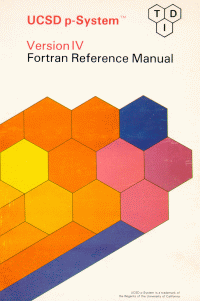 |
TDI Fortran Reference Manual Contents only, see the HP Series 80 page for a full manual |
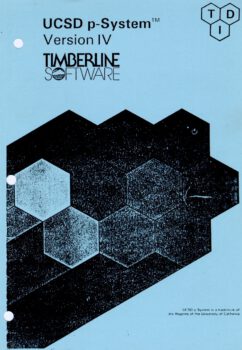 |
Timberline Spreadsheet 1982 |
Software
Sage disk images (IMD format)
Sage IV disk images unpacked
